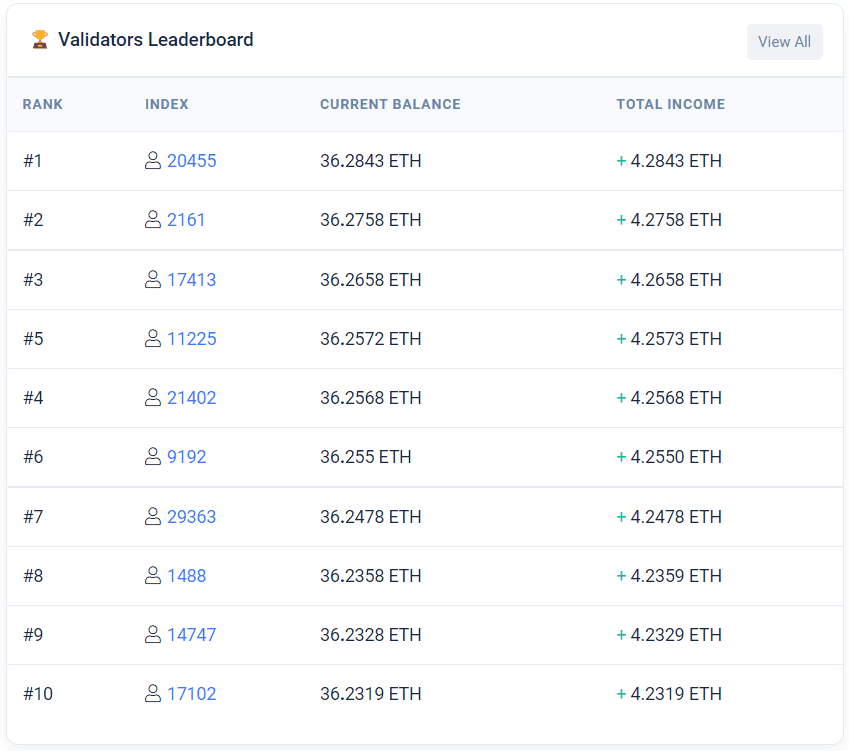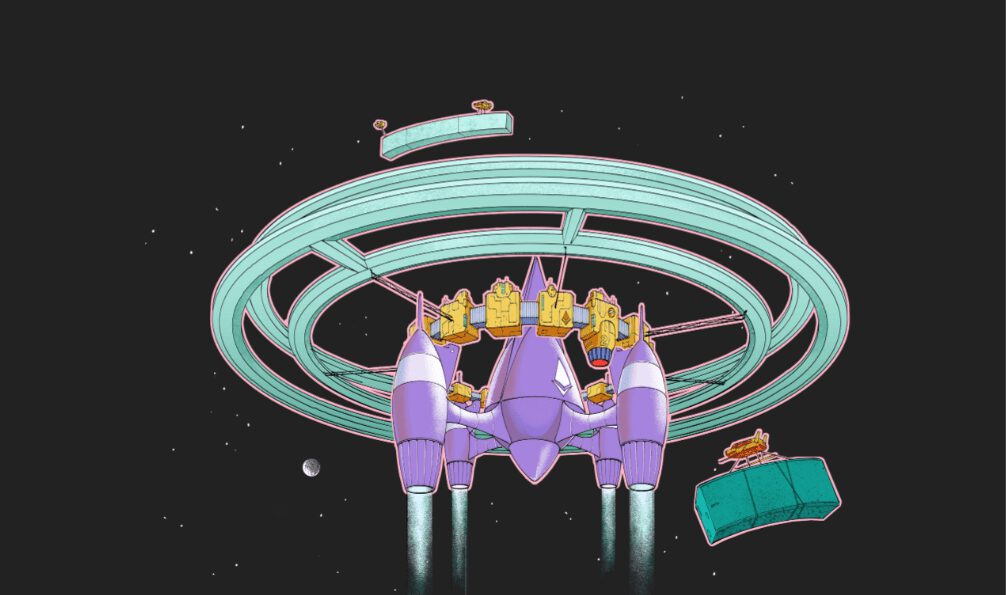Ethereum is set to unveil a software upgrade designed to reduce the amount of energy used in the network by 99%. The entire market is watching keenly as the days draw near, given Ethereum’s significant stake in decentralized finance (DeFi). The upgrade, known as “The Merge,” is the most highly anticipated event in the history of crypto, and it will cement Ethereum 2.0 as the new mainnet.
Here is what you need to know about “the Merge.”
What is the Merge Ethereum?
The Merge is crypto slang referring to Ethereum’s transition from proof-of-work (PoW) to proof-of-stake (PoS), a more energy-efficient technological infrastructure.
According to the Ethereum Foundation, the exact definition is “the joining of the existing execution layer of Ethereum (the mainnet we use today) with its new proof-of-stake consensus layer – the Beacon Chain.”
After almost a decade of studies and debates, the blockchain upgrade will likely be completed sometime between September 13 -16. This is the expected Ethereum merge date.
When Will the Ethereum Merge Happen?
The total terminal difficulty value triggering the Merge has been set at 58,750,000,000,000,000,000,000. This will represent the cumulative difficulty of all mined Ethereum blocks and is expected to be reached around September 15.
When the Terminal Total Difficulty (TTD) is reached, the network will merge its execution layer, allowing the chains to continue with a new system of issuing authenticated blocks of transactions.
The current total difficulty as at Sep-12-2022 08:06:07 PM +UTC was 58,572,839,737,400,219,299,750.

The TTD will trigger a difficulty bomb that will exponentially increase the difficulty of producing blocks, making it extremely difficult and economically devastating to mine one block on Ethereum’s PoW network. The Merge is expected to cut the network’s energy usage by 99.95%. Its completion will mark the end of Ethereum’s energy-intensive proof-of-work chapter.
Apart from that, it is meant to reduce the hefty transaction fees in Ether, the cryptocurrency used on the Ethereum blockchain. Moreover, the Merge will ensure better security, scalability, and sustainability for Ethereum.
Why Proof of Work (PoW) Isn’t Working
In this system, crypto transactions are powered by a scattered network of computers. Anyone can plug a machine into the PoW network and run software that solves complicated puzzles.
This process is designed to verify crypto transactions to ensure that people sending money have the funds to do so. The computers compete with one another to verify the transactions because they get crypto coins as rewards. This is known as “mining.”
However, this system is dominated by companies that have built warehouses full of computers to accumulate as many crypto coins as possible. This has caused energy costs to skyrocket, and researchers say that bitcoin mining can produce as much carbon dioxide per year as entire countries. Ethereum’s carbon footprint, for instance, is comparable to Finland’s.
The environmental impact sparked an industry-wide debate, pushing the need to change Ethereum’s energy-intensive infrastructure.
Is Proof of Stake (PoS) the Solution?
The idea of switching Ethereum from Proof of Work to Proof of Stake first surfaced in 2014.
In the Proof of Stake (PoS) system, crypto investors deposit or “stake” a certain number of digital coins into a shared network, allowing them to participate in a lottery. Each time a transaction is made, a participant from the lottery is selected to verify the transaction and get new coins.
This reduces energy costs by eliminating powerful computers that race to solve puzzles. Supporters of the Proof-of-Stake system say it is more egalitarian than mining since it’s easier to get involved.
However, critics say that the PoS system promotes inequality since only those with enough crypto to participate in the staking process can enjoy the benefits.
Ethereum users have already been staking 32 Ether (roughly $54,000), which is the minimum required to be a node validator. Stakers enter the lottery and get rewards for securing the PoS network. For instance, Staker #20455 is currently the leading network validator, having earned over 4.2 ETH since they started staking. You can find this information on Beaconscan.

The Chief Executive of Swan Bitcoin, a financial services firm focused on Bitcoin, predicts the fall of the PoS system.
“Only those with a lot of money can get paid, and very few can participate,” said Cory Klippsten. “Every single time this has been tried throughout history, the end result is that the people in control give themselves more money and power, and the system inevitably collapses.”
Why is the ETH Merge Taking So Long?
The Merge is taking so long, mainly due to the high stakes involved in the process. Extensive testing and bug bounties must be undertaken to ensure a safe transition to the Proof-of-Stake system.
A failed Merge will affect thousands of crypto projects and cause a market crash. Crypto engineers have described the transition process as changing engines during a flight.
To avoid disaster, developers and researchers have conducted years of tests to prepare for the transition. They have had to check for security bugs and even build a new blockchain named Beacon Chain that operates on a proof-of-stake system.
Beacon Chain VS Mainnet
The Beacon Chain was unveiled in 2020, and after so many trials, the blockchain is set to combine with the Ethereum mainnet in the next few days. The combination will mark the Merge, setting Beacon Chain as the main engine of block production.

Currently, Ethereum is operating on the Mainnet blockchain, the system we’re all used to. Since Beacon Chain was created, it has since existed as a separate blockchain from Mainnet, and they are now running in parallel.
However, Beacon Chain has not been processing Mainnet transactions. Instead, it has been reaching a consensus on its own, agreeing on active validators and their account balances.
Beacon Chain has been functioning as the de-facto testnet for the Ethereum upgrade, but this will soon change after the Merge.
Until today, validators have already staked more than 13 million ETH on the Beacon Chain, with over 425,000 active validators.

What Happens to Ethereum After the Merge
Luckily, users and holders do not need to do anything to protect their funds or Ethereum wallets before the merge.
Despite the transition to PoS, Ethereum’s history has remained intact and unchanged since its inception. Every transaction, smart contract, and balance will be merged. The funds in wallets before The Merge will still be accessible after. Users will not be required to upgrade.
However, users are advised to be on high alert for scammers trying to take advantage of users during the transition period. Avoid sending your ETH anywhere in an attempt to upgrade to “ETH2” since there is no “ETH2”.
Once the Merge is completed, there will be no differentiation between ETH1 and ETH2. Instead, there will be only one Ethereum that will function as it did before.
The idea that there will be a new coin or asset named “Eth 2.0″ is a misconception. After the Merge, you can view your address on Beaconscan, an Etherscan-based Beacon chain explorer.
Why Is The Merge Important?
The Merge is considered a milestone in the cryptocurrency industry due to its potential material and philosophical implications. The event is highly anticipated because not only will it reduce energy use, but it will also increase security and sustainability.
If successful, the Merge could bolster market confidence and inject some optimism after months of market volatility.
The Merge will prove that a decentralized network does not need permission to work energy-efficiently. The Merge is an incredibly rare event in crypto that may never happen again.
Conclusion
There will still be a series of updates following the Merge, including the Surge, Verge, Purge, and Splurge. The Surge will include the Shanghai upgrade, allowing users to withdraw staked ETH and sharding. This aims to improve scalability by spreading the burden of handling huge amounts of data over an entire network.
The Verge will let users become validators without storing much data, a massive step towards decentralization. The Purge, on the other hand, will remove the old network history. And finally, the splurge involves fine-tuning the four previously mentioned updates.
FAQ
1. Will Ethereum Merge increase price?
The price of Ethereum is expected to go up gradually after the Merge due to several factors. The asset will become deflationary, pushing its price even higher with the rise in demand. Moreover, large amounts of Ethereum staked to secure the network make the asset even more scarce and hence more valuable.
2. Will Ethereum 2.0 Be a New Coin?
There will not be a new ETH coin after the Merge. ETH will stay the same, and you do not have to do anything. That said, there will be a lot of fake ETH2 coins popping up right after the merge. Stay safe and do not interact with them.
3. Will ETH 2.0 Reduce Gas Fees?
Gas fees will not reduce after the Merge. The merge will transform the overall consensus algorithm but will not expand the network capacity. Because of this, the Merge will not result in lower gas fees.
4. Why is Ethereum Moving to Proof-of-Stake?
The main reason for moving Ethereum to Proof-of-Stake is to cut back on the energy PoW uses to mine new coins. Ethereum PoW uses 5.13 Gigawatts of energy continuingly. On the other hand, PoS uses only 2.62 Megawatts, about 99.95% less energy than PoW.


